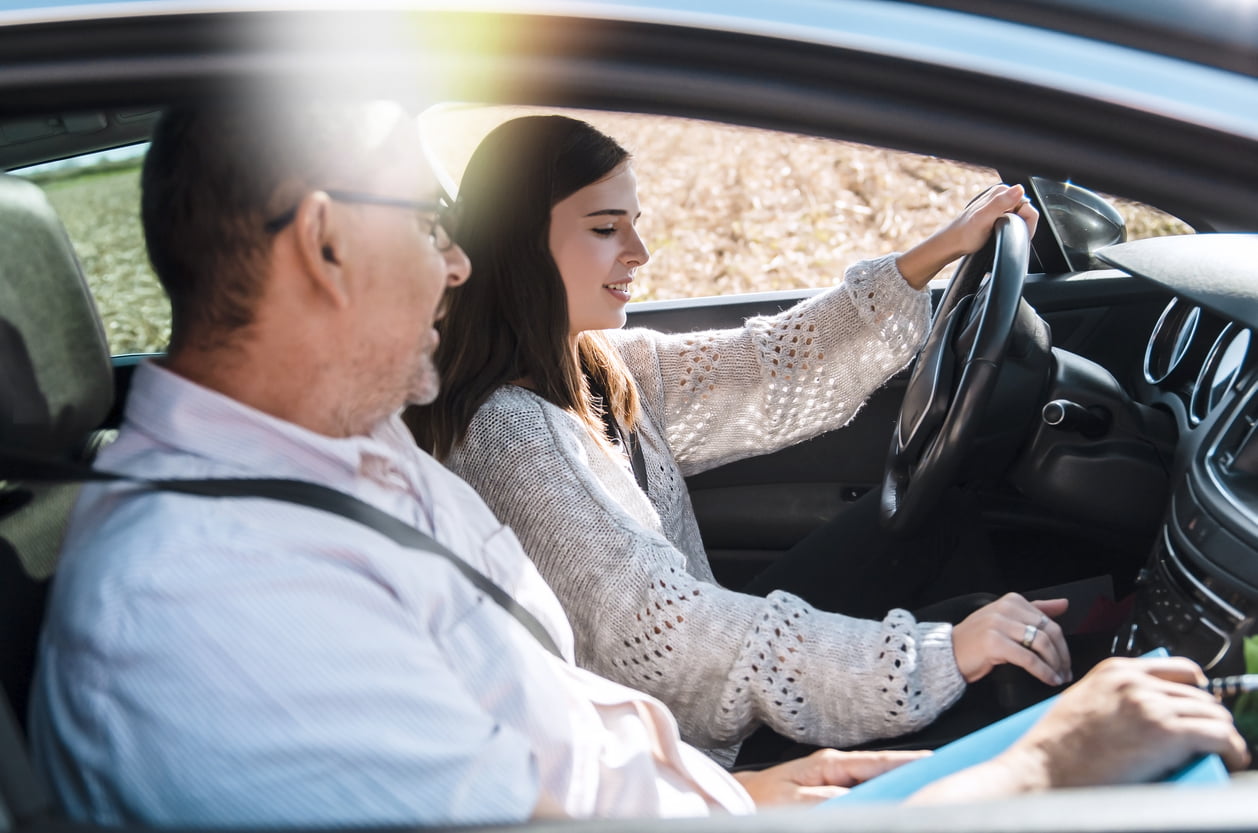Whether you’ve just earned your driver’s licence or have been driving forever, driving on the highway may be new or unfamiliar. It’s important to be comfortable when driving on the highway because things move more quickly than average roads. You need to be confident, keep your focus and stay aware. In this article, we take a closer look at highway rules and restrictions in Ontario, as well as touch on speed limits. Finally, we highlight some lesser-known restrictions you may not have heard of. If you want to explore Ontario highway driving and all it has to offer, let’s get you ready to hit the road!
What is considered a highway?
In Ontario, highways are defined by higher travel speeds and multiple lanes for travel. Also known as freeways or expressways, drivers enter and exit highways via ramps, and traffic travelling in either direction is separated by a barrier. Highways are designed for higher speeds of vehicle traffic. They omit intersections and prohibit other road users, like cyclists and pedestrians. While the lanes on a highway may seem the same, each has its own purpose. In a three-lane configuration, the left lane is designed for passing, the middle for travel at normal speeds, and the right for acceleration when passing, entering or exiting. On highways with additional lanes, a similar format follows; pass in the left, drive in the middle, enter/exit on the right.
The rules of 400-series highway driving
One of the main differences between the 400-series and the other Ontario highways is that they have four lanes instead of two, and come with their own set of rules.
Driving rules and restrictions for a 400-series highway:
- You cannot drive on a 400-series highway with a G1 licence unless you’re with a licensed driving instructor
- They all have a speed limit of 100km per hour, although they are testing an increase to 110km/hour on stretches of six Ontario highways
- It is dangerous and illegal for a slower-moving vehicle to cut in front of a faster-moving vehicle
- Use the far-left lane for passing only, then move back into the middle or right lane; drivers should not stay in the passing lane
HOV lanes
Some highways feature a High Occupancy Vehicle (HOV) lane. Designed to promote carpooling and provide a more efficient ride home, these lanes are reserved for vehicles with more than two occupants. They are being added to most of the 400-series highways, but as of 2020, they exist on portions of the 400, 401, 404, 410 and 427. Other quick facts:
- There is a striped buffer zone that separates the HOV lane from the rest of the highway. Don’t cross that zone!
- Vehicles with “green” licence plates can use HOV lanes at any time. Plug-in hybrid electric vehicles and full-battery electric vehicles are eligible for those plates, if you have one!
- Buses and emergency vehicles are permitted to use the lanes at any time.
- Some HOV lanes on the Queen Elizabeth Way (QEW), Highway 410 and Highway 403 can also be used by solo drivers with a High Occupancy Toll (HOT) lane permit as part of Ontario’s HOT lanes pilot program. You can face fines and demerit points for using HOV lanes improperly.
Highway driving tips for new drivers
In preparing for your G licence, new drivers will have to have experience with Ontario highway driving in order to be able to take their test. But for many new drivers, it will be quite a while before they will drive on a highway again. In order to help ease some of the anxiety you may be feeling about Ontario highway driving, here are a few tips to remember:
- Go with the flow! Drive at a steady speed consistent with the traffic around you.
- Check your mirrors frequently just as you would when driving in the city.
- Look ahead as far as you can to anticipate what’s coming next. Don’t rely on the driver in front of you to gauge the flow of traffic.
- Stay clear of large vehicles that block your vision; pass them or adjust your speed to make sure you’re not in their blind spot.
- Leave two seconds between you and the vehicle in front of you so that you can stop in time if that driver slams on their brakes.
- Always slow down to the posted speed when moving into an exit ramp.
- Pay close attention to upcoming exits and do not make dangerous lane changes to make your exit. Get off at the next one.
- Fatigue is a leading cause of highway accidents, so take a break at a rest stop if you’re tired.
- Avoid driving at rush hour if you can (7:30am–9:30am and 3:30pm–6:30pm.)
Lesser-known highway driving rules
- Ontario’s Highway Traffic Act does spell out when the left-hand passing lane can be used. The act says the left lane should be left open for passing. Vehicles travelling slower than “the normal speed of traffic” must use the right lane.
- You may pass on the right of multi-lane or one-way roads and when overtaking a streetcar or a left-turning vehicle. Passing on the right can be more dangerous than passing on the left. If you are driving in the left lane with a slower vehicle in front of you, wait for the vehicle to move to the right.
- Just like driving barefoot, having no footwear while driving is illegal. However, flip flops or sandals are not recommended, as they do not provide secure grip or control.
- Once you enter an on-ramp, it is illegal to reverse or turn around. That is unless otherwise directed by a law enforcement officer.
- Dangerous driving is a criminal offence under the Criminal Code of Canada. When a person receives criminal charges, their photograph and fingerprints are taken and they will have a police file. However, this does not apply to a charge under the provincial Highway Traffic Act.
Other little known driving facts…
- Tobogganing, skateboarding, in-line skating, coasting, sledding or steering a toy vehicle down the highway while holding onto a moving motor vehicle is not allowed. Presumably, this is because you’d be going less than 40 kmh, which is also illegal.
- It is illegal in Ontario to backup on a highway or divided road that has a speed limit of more than 80 km/h. This applies to the travelled section of the road and the shoulder.
- Here are a few instances that you can be charged as much as $85 for:
- Allowing fuzzy dice, dream-catchers or other objects to obscure the view through your front windshield
- Producing excessive smoke, fumes or noise
- Having more than four-lighted headlamps
- Not displaying a “right-hand drive vehicle” sign for imported cars
- If three large people are occupying the front seat of your pickup, they could be “crowding the driver,” which is grounds for a ticket in Ontario. The penalty is three demerit points under the province’s Highway Traffic Act.
- Covering your licence plate can get you a $115 fine. It’s illegal under Ontario’s Highway Traffic Act to have anything touch, obstruct or cover a licence plate, including protective plate covers.
- If your car horn isn’t working, it’s apparently okay to “gong” other motorists. Don’t believe us? It’s true:
“Every motor vehicle, motor-assisted bicycle and bicycle shall be equipped with an alarm bell, gong or horn, which shall be kept in good working order and sounded whenever it is reasonably necessary to notify pedestrians or others of its approach.” (Highway Traffic Act, RSO 1990, c H8, s 75(5).”
Final thoughts on Ontario highway driving
Ontario highway driving doesn’t need to be a nerve-racking experience. While the speed and pace of traffic may be faster than on city streets, it also affords you the chance to travel and explore Ontario. Always remember to stay vigilant when driving on the highway, especially on long weekend trips to the cottage or other vacation spots. Be sure to look out for animals, pedestrians and other objects on the roads, particularly while driving at night.
Check out isure’s road trip 101 guide here!




